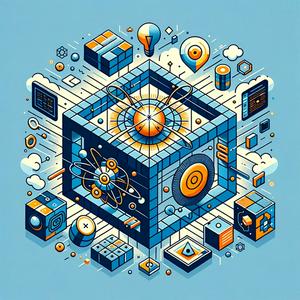Quantum-Classical Hybrids: Orchestrating the Future of Computing | Quiet Please Podcast
This is your Quantum Computing 101 podcast.Today, just days after Columbia Engineering’s big reveal, I’m standing in the humming quantum testbed at Inception Point, chest tight with the thrill of new frontiers. My name’s Leo—Learning Enhanced Operator—and right now, quantum-classical hybrids are redefining how we solve problems that yesterday would’ve looked impossible.If you blinked, you missed it: Columbia’s HyperQ system is making waves as the first solution to bring cloud-style virtualization to quantum computing. In practice? It means that for the first time, multiple users can access a single quantum processor without long, frustrating queues—an efficiency leap reminiscent of classical cloud infrastructure but adapted for the delicate game of qubits and superpositions. Picture a concert hall’s grand piano: previously, only one virtuoso could play; now, with HyperQ’s virtualization, an orchestra of problem-solvers can perform in parallel, each running their own quantum symphony amid a continuous stream of classical notes.What’s locked inside these quantum-classical hybrid solutions? I like to think of them as tightrope walkers, moving with breathtaking agility between two worlds. Take quantum chemistry simulations for new materials: IBM’s latest hybrid algorithms combine the brute computational force of classical processors with the almost magical parallelism of quantum circuits. The Extended Hubbard Model, for example, leverages density functional theory—classical math—to tune the quantum representation of a material, then quantum algorithms dig deeper, unraveling the mysteries of electronic band gaps. Classical and quantum are not adversaries; they’re dance partners, each taking the lead when their domain shines brightest.Behind the glass, my colleagues debate the future, referencing pioneers like Daniel Lidar—whose work in quantum error correction is tuning quantum computers like a maestro adjusting strings before showtime. Lidar’s Quantum Elements startup is in the news this week, using AI to calibrate quantum hardware. Their approach addresses decoherence, the silent killer of quantum algorithms, ensuring each qubit’s performance stands in harmony with classical controllers. The fusion of quantum with AI is like having a second mind watching, correcting, and learning in real time.But hybrids aren’t just about synergy—they are about *responsiveness*. Dynamic resource management, such as malleability in hybrid HPC-quantum workloads, lets classical resources pulse in and out according to quantum need. It’s a workflow maestro, optimizing not just speed but also power, making quantum accessible to more users, from drug designers to logistics gurus.The energy here’s electric. Quantum entanglement—the “spooky action” Einstein described—now finds meaning in everyday operations. Our hybrid machines let us untangle knotty problems in chemistry, finance, and even art, mapping faster and more deeply than any solo classical system before.So, next time you see news of a quantum-classical breakthrough, imagine not a rivalry, but an alliance, an orchestra of classical and quantum expertise.Thanks for joining me, Leo, in this week’s Quantum Computing 101. Got a burning question or a topic you want to hear explored? Email me at
[email protected]. Don’t forget to subscribe, and for more information check out quietplease.ai—this has been a Quiet Please Production. Stay curious.For more http://www.quietplease.aiGet the best deals https://amzn.to/3ODvOta


